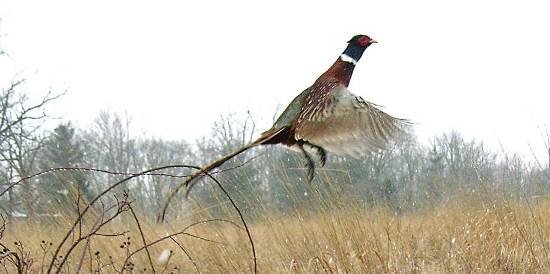

For example, in 2006, participants reported more than 4.3 million bird observations across North America. It is amassing one of the largest and fastest-growing biodiversity data resources in existence.
#NATIVE GAME BIRDS OF MICHIGAN PROFESSIONAL#
Launched in 2002 by the Cornell Lab of Ornithology and National Audubon Society, eBird provides rich data sources for basic information on bird abundance and distribution at a variety of spatial and temporal scales.ĮBird's goal is to maximize the utility and accessibility of the vast numbers of bird observations made each year by recreational and professional bird watchers. eBird has revolutionized the way that the birding community reports and accesses information about birds.

Meanwhile, offshore, diving ducks such as bluebills, redheads and canvasbacks are the lure. Newcomers and birds returning from inland farm fields tumble from the sky to join their brethren (or fake brethren, decoys set by hunters who deepen the deceit by calling plaintively).

In shallow cattail marshes ringing the Bay, puddle ducks like mallards feed and loaf. Long before the DNR created managed waterfowl hunting areas, the Saginaw Bay drew both ducks and duck hunters every fall, and this rich tradition continues yet today. Place the furthest decoy at the limit of your range, 40 yards or so any duck closer than that is fair game. Set your decoys, remembering that ducks take off and land into the wind, most often settling into a pocket in the center of a U-shaped or hook-shaped spread. Once you've selected or been assigned a blind, it's off to the parking lot that serves it, to load decoys into boat or canoe (a few spots offer wader-clad, walk-in hunting) and head for the blind you've chosen. or so.Ĭheck the 2020 Michigan Waterfowl Digest, with updates posted regularly online, for the latest information. Draws for the morning hunts are typically between 5 and 6 a.m., depending on the area, while afternoon draws are held at 11 a.m. The managed areas have historically hosted two hunts per day, each preceded by a drawing to determine the blind-picking order. Hunting areas are divided into zones, each featuring a central area where camouflaged hunters hide, almost always after deploying a flock of decoys in the water in front of them. These areas feature fall-flooded farmlands that provide food and resting spots for ducks (and prime hunting spots for the people who frequent them). Charles and Nayanquing Point Wildlife Area near Pinconning. Two of the Michigan DNR's seven Managed Waterfowl Hunt Areas - referred to as their "Wetland Wonders" - are in the Great Lakes Bay Region: Shiawassee River State Game Area at St. In many ways, the easiest-to-plan waterfowling adventures here in the Great Lakes Bay are managed-area hunts.


 0 kommentar(er)
0 kommentar(er)
